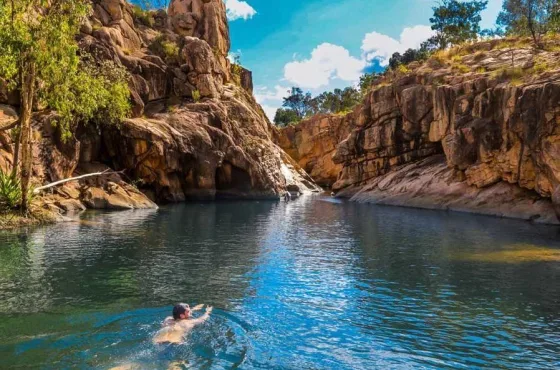
5 Reasons to Do Kakadu
The UK’s National Student’s reporter Dave Owen, needed little persuading to nominate Kakadu as Australia’s ‘must-visit’ destination.
There are plenty of reasons why Australia is one of the most popular gap year destinations in the world. There’s no language barrier for UK travellers, backpackers can comfortably find work, and it’s packed with incredible, iconic things to do. It’s also absolutely gigantic, which means it really does stake at least a year to see it all.
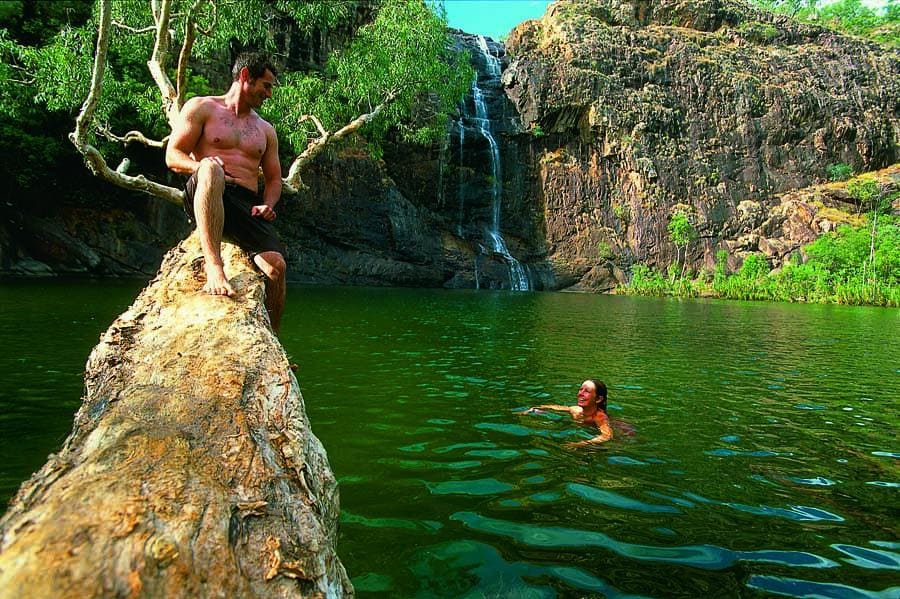
Gunlom Falls swimming pool
Whether you have a week or a year, Kakadu National Park in Australia’s Northern Territory should be your first stop on any trip down under. Only an easy three hour drive east from capital city Darwin, the roads through the park make it easy to see everything whether you’re self-driving or part of a tour group.
Here’s what you shouldn’t miss:
It’s the size of a small country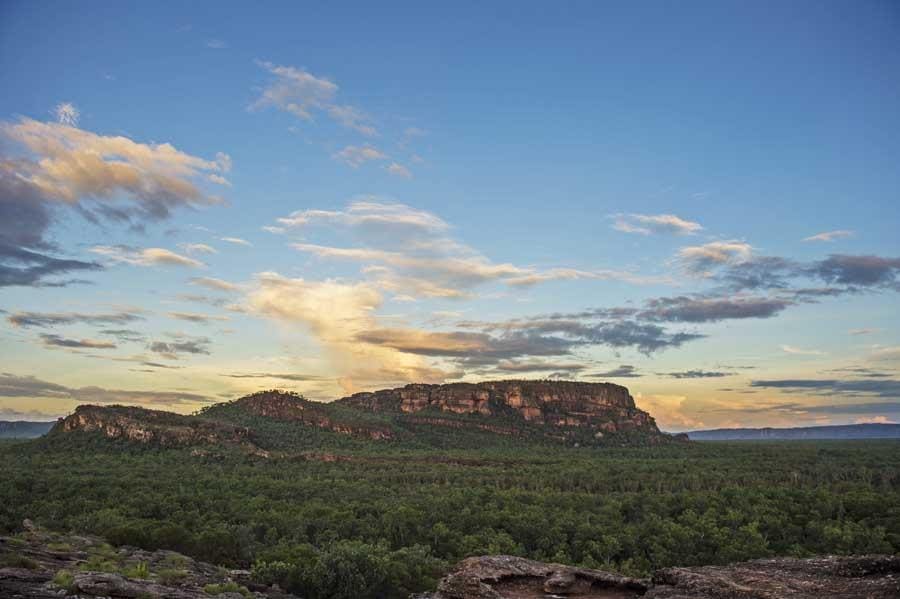
Nourlangie Rock
Kakadu National Park is a protected area that covers around 20,000 square kilometres; only a little bit smaller than Wales. Its size allows it to encompass the essence of Australia: seemingly endless rugged terrain, astounding natural sights like thundering waterfalls and towering rock escarpment, and weird, awe-inspiring wildlife. You could spend a month in the park and experience something new every day. Nowhere else on the continent feels more like ‘real’ Australia than Kakadu.
It’s home to iconic Aussie wildlife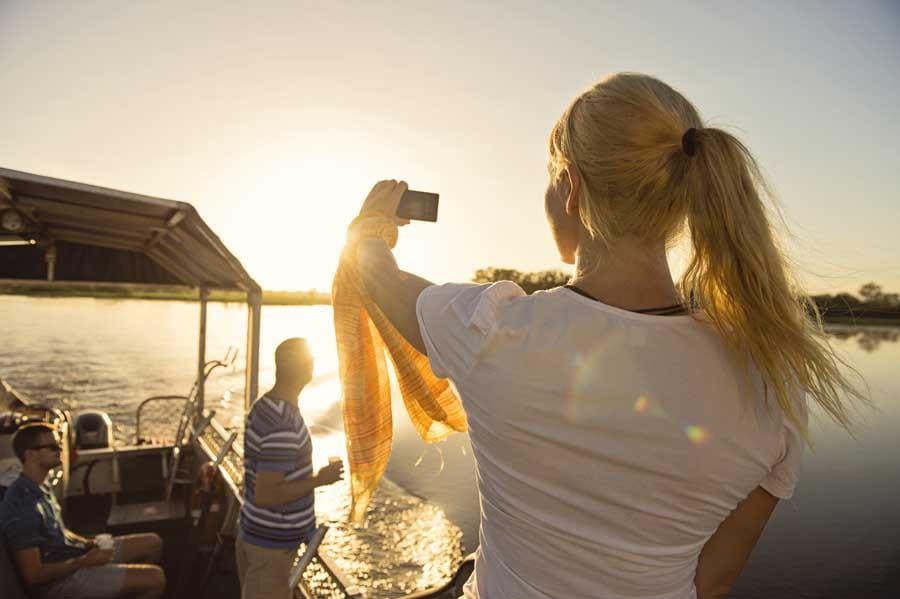
See incredible wildlife on Yellow Water Cruises
Have you ever wanted to visit a place where you’re classed as prey? Welcome to Kakadu, where any body of water might contain a five-metre long saltwater crocodile! During a boat cruise on the Yellow River you’ll have the thrill of being surrounded by these fearsome predators. There are a lot more animals to see too: wallabies, dingoes, bandicoots, snakes, and other Aussie favourites are all present. Kakadu is a cornucopia of uncanny wildlife, but it’s the crocs that’ll have you scrambling for your camera every time.
Note: due to the crocodile population, you must never swim anywhere that isn’t clearly designated as safe to do so.
It’s rich in Indigenous culture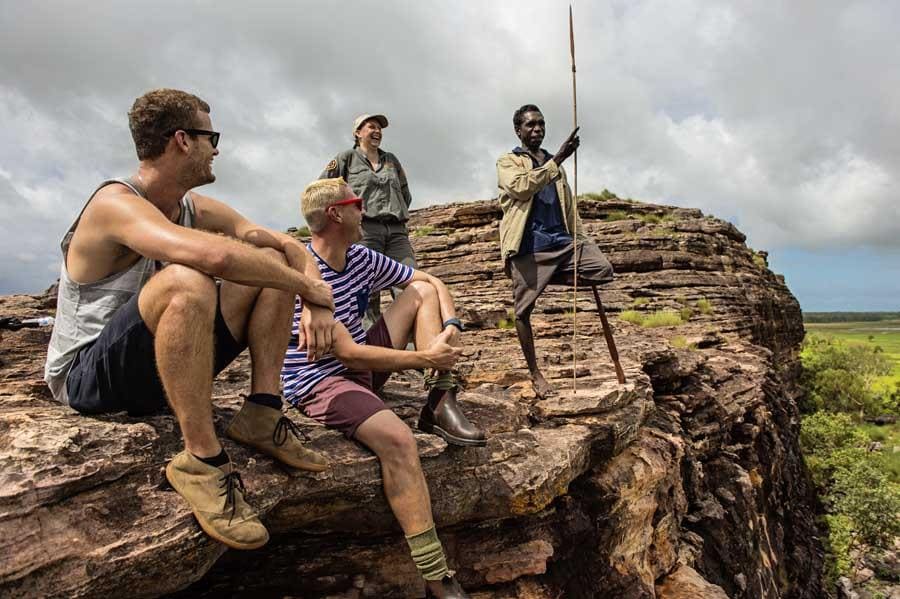
Nadab lookour, Ubirr Rock
Aboriginal people have lived in the Kakadu area for at least 40,000 years, and their rich culture is found throughout the park, with over 5,000 recorded Indigenous art sites allowing you to learn about and trace their long history. The two most popular rock art sites are Nourlangie, a towering outcrop of rock that shelters paintings that represent the Aboriginal Dreaming, and Ubirr, where the art is accompanied by stunning views and sunsets across the surrounding floodplains. Learning the history of the Indigenous people is important for any visit to Australia, and there are few better places to do it than Kakadu.
It’s a paradise of waterfalls and natural swimming pools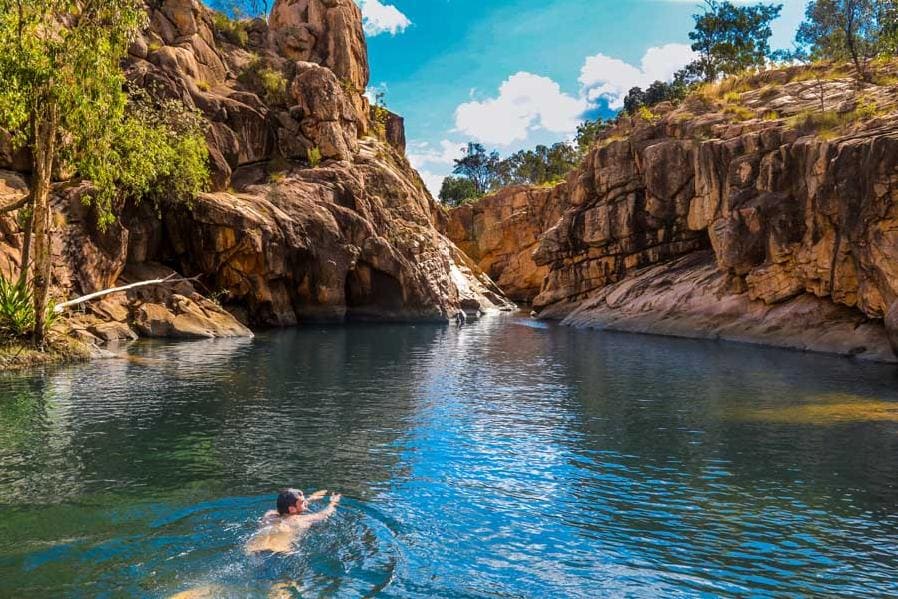
Gunlom Falls, Kakadu National Park // David Kirkland/Tourism NT
The abundance of natural wonders in Kakadu can make it hard to believe it’s all real. This is particularly true of the waterfalls found throughout the park. They’re spectacular to see, and offer incredible backdrops for the natural swimming holes at their bases. The largest waterfall in the park is Jim Jim Falls, hidden away at the end of a rocky track so reaching it always feels like a fresh discovery. Arguably most impressive is Gunlom Falls, the infinity pool at its top providing dazzling panoramic views while you cool off and swim.
Don’t worry, all the swimming holes are regularly checked for crocodiles by park rangers. Never swim unless you’re 100% sure it’s safe to do so.
It’s two parks for the price of one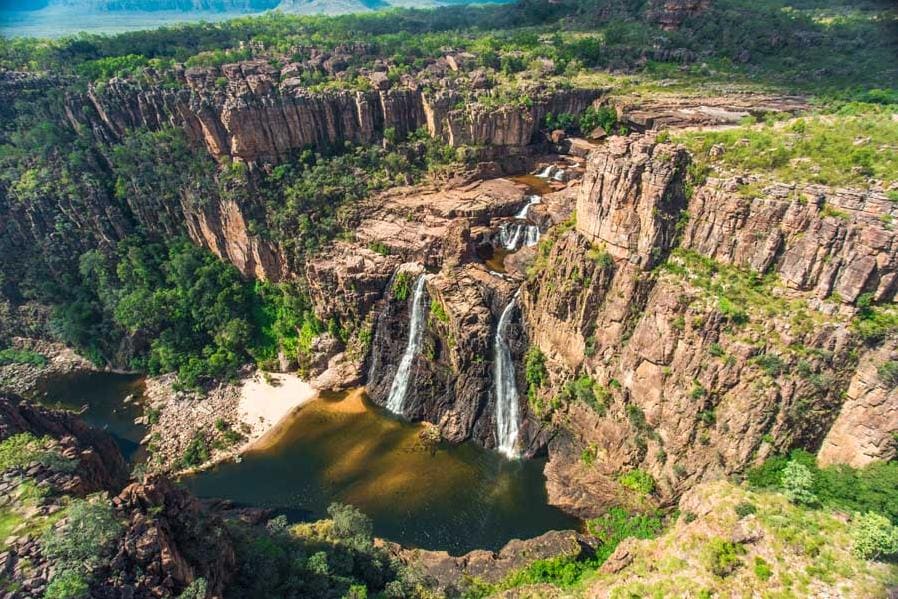
Twin Falls // Sam Earp/Tourism NT
Kakadu National Park is so unlike anywhere else on the planet that it doesn’t even abide by the seasons as we know them. Instead it simply alternates between a dry season and a wet season. The dry season is, well, dry, guaranteeing sunshine every day and low humidity, making it the prime time to visit. The wet season is actually even hotter, but characterised by high humidity, rain, and apocalyptic thunderstorms. During this time the waterfalls are at their most dramatic, the park’s flora springs to life, and animals absent during the dry weather become commonplace. From season to season, Kakadu is practically a different place, making it astonishing to visit at any time of year.
Writer credit: Dave Owen